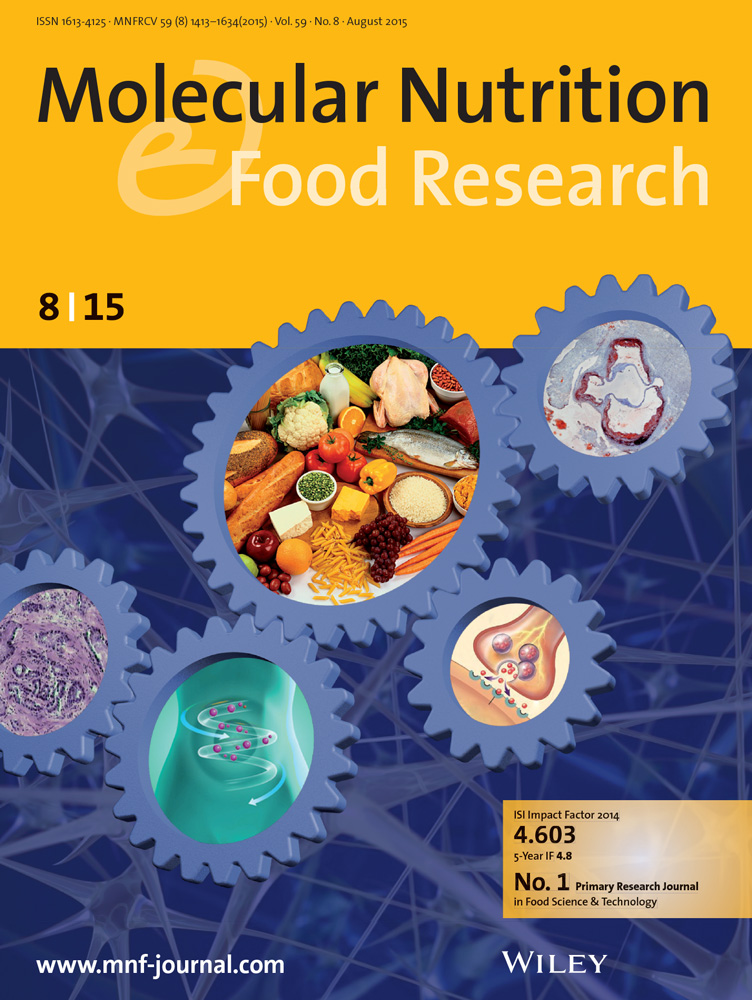随机对照试验:低水解程度的苦味豌豆蛋白水解干预对中等超重男性受试者能量摄入的影响。
IF 4.2
2区 农林科学
Q1 FOOD SCIENCE & TECHNOLOGY
引用次数: 0
摘要
优化植物蛋白的摄入,如豌豆蛋白水解物(PPHs),可能有助于肥胖管理。本研究调查了不同苦味和水解度(DH)的PPHs对健康男性参与者的饱腹感是否有不同的影响。在一项短期随机对照试验中,19名中度超重男性(BMI 25-30 kg/m2)服用75 g葡萄糖加15 g PPH(对照组不服用PPH;PPH1:少苦,DH = 35%;PPH2:更苦,DH = 23%)。服用PPH后,与对照组相比,PPH2组从随意早餐中摄入的能量减少了-126±329 kcal (p < 0.05)。PPH1降低血浆ghrelin和DPP-4水平(AUC: -9.4±19.6和-12.5±24.7,p < 0.05)。通过13c - na -乙酸呼吸试验评估,服用PPH2后胃排空平均延迟65% (p < 0.0001)。苦味和PPH的DH对饱腹感信号的影响不同。PPH1(少苦,高DH)降低DPP-4和胃饥饿素水平,促进饱腹感。PPH2(更苦,DH更低)延迟胃排空,增强饱腹感。这些发现强调了PPHs在体重管理策略中作为功能性成分的潜力。本文章由计算机程序翻译,如有差异,请以英文原文为准。
Randomized Controlled Trial: Effects of a Bitter-Tasting Pea Protein Hydrolysate Intervention With Low Degree of Hydrolyzation on Energy Intake in Moderately Overweight Male Subjects.
Optimizing plant-based protein intake, such as pea protein hydrolysates (PPHs), may aid in obesity management. This study investigated whether PPHs with varying bitterness and degrees of hydrolysis (DH) differently affect satiety in healthy male participants. In a short-term randomized control trial, 19 moderately overweight men (BMI 25-30 kg/m2) consumed boluses of 75 g glucose plus 15 g PPH (control without PPH; PPH1: less bitter, DH = 35%; PPH2: more bitter, DH = 23%). Upon PPH administration, energy intake from an ad libitum breakfast was reduced by -126 ± 329 kcal (p < 0.05) in the PPH2 group compared to the control. PPH1 decreased plasma ghrelin and DPP-4 levels (AUC: -9.4 ± 19.6 and -12.5 ± 24.7, p < 0.05). Gastric emptying was delayed by a mean of 65% (p < 0.0001) after PPH2 consumption, assessed via 13C-Na-acetate breath test. Bitterness and DH of PPH influence satiety signals differently. PPH1 (less bitter, higher DH) reduces DPP-4 and ghrelin levels, promoting satiety. PPH2 (more bitter, lower DH) delays gastric emptying, enhancing satiation. These findings highlight the potential of PPHs as functional ingredients in weight management strategies.
求助全文
通过发布文献求助,成功后即可免费获取论文全文。
去求助
来源期刊

Molecular Nutrition & Food Research
工程技术-食品科技
CiteScore
8.70
自引率
1.90%
发文量
250
审稿时长
1.7 months
期刊介绍:
Molecular Nutrition & Food Research is a primary research journal devoted to health, safety and all aspects of molecular nutrition such as nutritional biochemistry, nutrigenomics and metabolomics aiming to link the information arising from related disciplines:
Bioactivity: Nutritional and medical effects of food constituents including bioavailability and kinetics.
Immunology: Understanding the interactions of food and the immune system.
Microbiology: Food spoilage, food pathogens, chemical and physical approaches of fermented foods and novel microbial processes.
Chemistry: Isolation and analysis of bioactive food ingredients while considering environmental aspects.
 求助内容:
求助内容: 应助结果提醒方式:
应助结果提醒方式:


